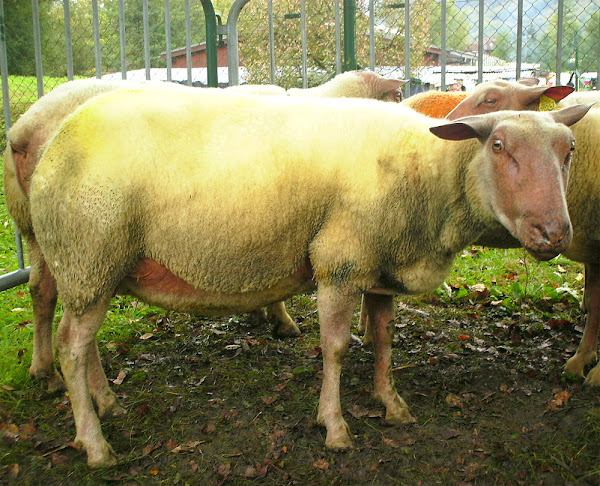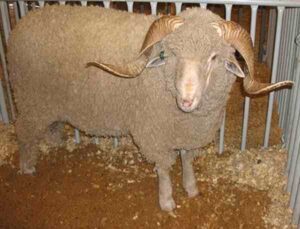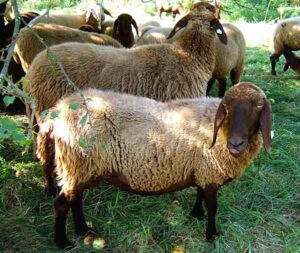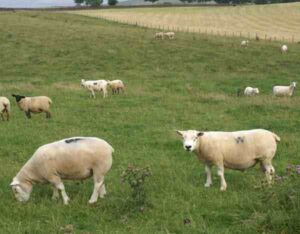The Rouge de l’Ouest sheep is a breed of domestic sheep from France. It is also known as Tête rouge du Maine, and name of this breed literally translates from French as “Red of the West” which refers to it’s region of origin and it’s unique pinkish face and legs.
The breed was developed in the Maine et Loire department of France. And it was developed through crossing local landrace sheep breeds with Wensleydales and Bluefaced Leicesters.
It is of the same origin as the Blue du Maine, but with a distinctive pink face and legs. The French registry for the Rouge de l’Ouest sheep was established in 1968, and the U.K. registry was established in 1986. Read some more information about this sheep breed below.
Rouge de l’Ouest Sheep Characteristics
Rouge de l’Ouest sheep is a medium to large sized breed. It has unique pinkish face and legs. It’s wool is medium in length.

Both rams and ewes are usually polled, and these animals have a well-muscled body. The breed is related to the Bleu de Maine, despite it’s quite different appearance. Photo and info from Wikipedia.
Uses
This was originally a dairy sheep breed, used to produce Camembert cheese. But today, the breed is raised mainly for meat production purpose.
Special Notes
The Rouge de l’Ouest sheep is a strong and hardy breed of domestic sheep. It was originally a dairy sheep breed and used for producing Camembert cheese in the past. But today, the breed is raised mainly for meat production. The rams are used as sires for market lambs.
Average fleece weight of the Rouge de l’Ouest sheep is about 1.5 kg to 2 kg, with a staple length of 1.8 inches to 2.3 inches and a spinning count of 58’s to 60’s. However, review full breed profile of this sheep breed in the following chart.
| Breed Name | Rouge de l’Ouest |
| Other Name | Also known as Tête rouge du Maine |
| Breed Purpose | Mainly meat |
| Special Notes | Strong and hardy, excellent meat breed, well adapted to native climate, used as a dairy breed in the past, but now raised mainly for meat production |
| Breed Size | Medium to large |
| Horns | No |
| Climate Tolerance | Native climates |
| Color | White |
| Rarity | Common |
| Country/Place of Origin | France |





